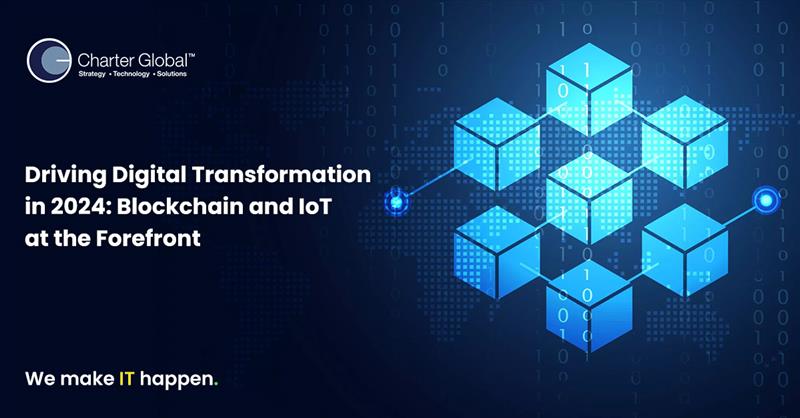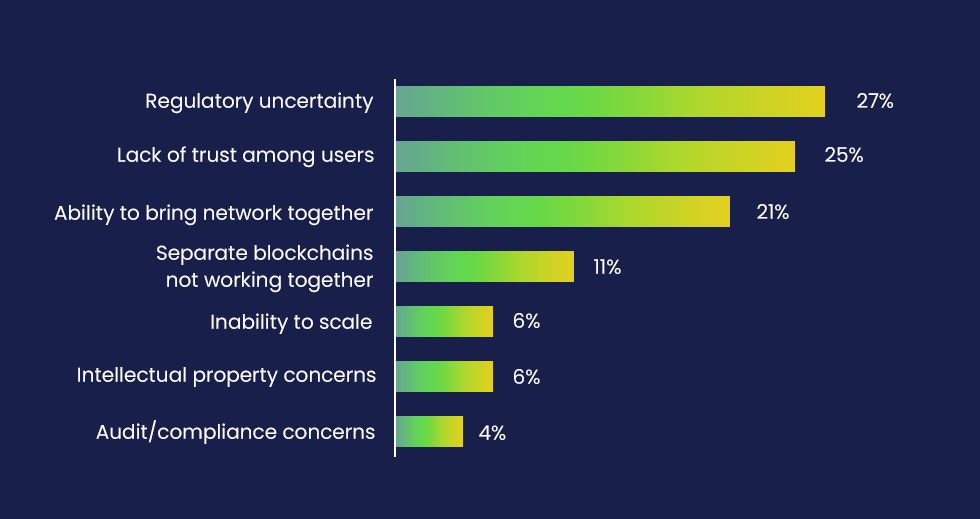Businesses today are under immense pressure to adapt and innovate to stay competitive. Digital transformation has emerged as a critical strategy for organizations to leverage technology to improve their operations, enhance customer experiences, and drive growth. At the forefront of this transformation are two powerful technologies: blockchain and the Internet of Things (IoT).
Blockchain, with its decentralized and immutable nature, offers unmatched security and transparency. IoT, on the other hand, enables seamless connectivity and data collection from physical devices, providing valuable insights into real-world operations. Together, blockchain and IoT have the potential to revolutionize industries across the board, from supply chain management to healthcare and beyond. In this blog, we will explore how these technologies are shaping the future of digital transformation in 2024 and the significant benefits they offer.

Blockchain is a distributed ledger technology that records transactions in a secure and transparent manner. Unlike traditional databases, which are centralized and controlled by a single entity, blockchain operates on a decentralized network of computers. This decentralization ensures that no single party has complete control over the data, making it highly resistant to tampering and censorship.
The Internet of Things (IoT) refers to the interconnected network of physical devices embedded with sensors, software, and network connectivity. These devices can collect and exchange data with each other and with central systems, enabling real-time monitoring and control of physical processes.
Blockchain and IoT can work together to create powerful and innovative solutions. Blockchain’s decentralized nature and immutability can provide a secure and transparent foundation for IoT data, while IoT’s ability to collect and process real-time data can enhance the value of blockchain applications.
One of the most promising areas of synergy between blockchain and IoT is in supply chain management. By combining IoT sensors with blockchain-based tracking systems, businesses can achieve greater visibility into their supply chains, ensuring product authenticity, tracking compliance with regulations, and reducing the risk of counterfeiting.
Another example is the use of blockchain and IoT in energy grids. Smart meters equipped with IoT sensors can collect data on energy consumption and usage patterns. This data can be securely stored and analyzed on a blockchain network, enabling the development of decentralized energy markets and peer-to-peer energy trading.

While the combination of blockchain and IoT offers significant benefits, it also presents certain challenges:
However, these challenges also represent opportunities for innovation. By addressing security concerns through advanced cryptographic techniques and developing scalable blockchain protocols, businesses can unlock the full potential of blockchain and IoT. Additionally, efforts to standardize communication protocols and data formats can improve interoperability and facilitate the integration of different systems.
Overall, the intersection of blockchain and IoT offers a promising avenue for digital transformation. By leveraging the strengths of both technologies, businesses can create innovative solutions that enhance efficiency, improve security, and drive growth.
To better understand the potential of blockchain and IoT in digital transformation, let’s explore some real-world examples:
As blockchain and IoT technologies continue to evolve, we can expect to see even more innovative applications in the future. Some potential trends include:
These are just a few examples of how blockchain and IoT are shaping the future of digital transformation. As these technologies continue to mature, we can expect to see even more disruptive and innovative applications across various industries.
In conclusion, blockchain and IoT are emerging as powerful drivers of digital transformation in 2024. These technologies offer significant benefits, including enhanced security, transparency, efficiency, and innovation. By leveraging the strengths of both blockchain and IoT, businesses can create innovative solutions that address complex challenges and drive growth.
As we look ahead, it is clear that the integration of blockchain and IoT will continue to play a crucial role in shaping the future of industries across the board. By understanding the potential of these technologies and embracing their applications, organizations can position themselves for success in the digital age.
Charter Global is committed to helping organizations leverage the power of blockchain and IoT to achieve their digital transformation goals. Our expert team can provide tailored solutions, including:
Contact us today to learn more about how Charter Global can help you leverage blockchain and IoT to drive innovation and achieve your business objectives.
Or mail us at [email protected] or call +1 770 326 9933